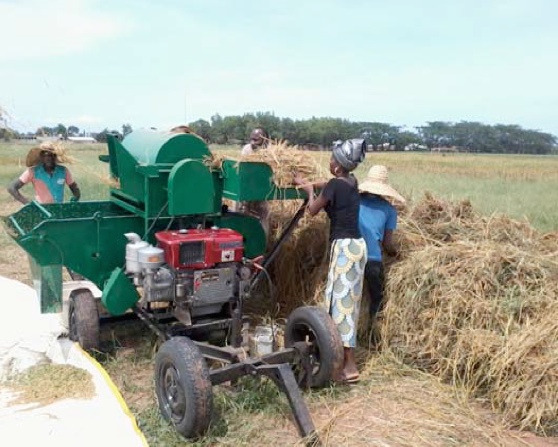What is it?
The ASI thresher mechanically separates the rice grains from the panicle without damaging the grains. It is composed of a threshing drum, blower, loading tray, shaker, two paddy outlets (one for filled paddy and the other for unfilled paddy), towing bar and two wheels. It requires an engine of 18-24 CV mounted on its frame as power source. The threshing capacity is 2 – 2.5 tons per hour. The ASI thresher has a compact structure for easy mobility and transport. It is 1.7 m height, 2.1 m width and 2.7 m depth. It weighs 850 – 900 kg.
What are the benefits and added value?
It reduces the loss of grains and saves labor and time for threshing operations especially for women. The paddy produced is clean and not broken enhancing the quality of rice.
The ASI thresher is easy to build and can operate at the village level. Local manufacturers can download the technical design from the here and use local materials to build and adapt the machine to local conditions. A locally manufactured ASI thresher costs about 4,500 USD including the engine.
What are the drawbacks?
The ASI thresher needs to be transported to the field which may be difficult. It has been constructed with a towing mechanism that can be hooked to a pickup or a powertiller. It is light enough that it can be loaded in a pickup for long distance transport.
Where has it been tested?
The ASI Thresher has been tested in various countries in Africa. Local manufacturers have been trained to build the ASI in Benin, Burkina Faso, Cameroon, Cote d’Ivoire, Gambia, Mali, Mauritania, Nigeria, Senegal and Tchad.
TECHNOLOGIES DEVELOPED BY AFRICA RICE CENTER IN COLLABORATION WITH PARTNERS ARE PUBLIC GOODS. KINDLY ACKNOWLEDGE THE AFRICA RICE CENTER IF YOU USE ANY ON THE TECHNOLOGIES DESCRIBED HERE.














